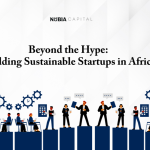Startup valuation isn’t just a number; it’s a story. The story of your potential, your traction, your risk profile, and your vision. Whether you’re pre-seed or Series A, understanding how to value your startup is critical to raising the right round, at the right terms, and with the right partners.
In this guide, we’ll walk you through the most trusted startup valuation methods used by investors, show you how they apply to early-stage ventures, and share real-life examples to help you navigate your next funding conversation with confidence.
Key Takeaways
- There is no single “correct” valuation; it’s often a negotiation based on perceived risk and potential.
- Common VC valuation methods include comparables, scorecard, DCF, and the Berkus method.
- Real-world data like revenue, traction, market size, and team experience significantly influence valuation.
- Founders should value strategic investor fit just as much as financial terms.
Why Startup Valuation Matters for VC
Valuation affects more than just how much equity you give away. It determines your future ownership, impacts investor expectations, and signals confidence (or red flags) to future funding rounds. Overvaluing can stall growth, while undervaluing may mean giving up too much too soon.
For example, in 2019, scooter startup Bird raised at a $2.5B valuation with minimal revenue. The market corrected that harshly in later rounds. Meanwhile, Canva’s steady valuation growth over years helped it maintain founder control.
Common Startup Valuation Methods Used by VCs
1. Comparable Company Analysis (“Comps”)
This method uses the valuation of similar startups in your industry and stage to benchmark yours. If SaaS companies with $1M ARR are raising at $10M pre-money, and you have similar traction, that’s your baseline.
Example: If your fintech app has 50,000 MAUs and a direct competitor just raised a $5M round at a $20M valuation with similar traction, that sets a precedent.
2. Discounted Cash Flow (DCF)
Used more often in later stages, this method estimates your future cash flows and discounts them to today’s value. VCs often apply high discount rates (30%+) to account for startup risk.
Example: You project $10M in revenue in year 5 with 20% margins. A 30% discount rate would heavily reduce its present value, which helps justify early-stage VC terms. Use our startup valuation calculator online.
3. The Berkus Method (Great for Pre-Revenue Startups)
Assigns monetary value to five key areas:
- Sound Idea (base value)
- Prototype
- Quality Management Team
- Strategic Relationships
- Product Rollout or Sales
Each area might be valued up to $500K, totaling a $2M – $3M pre-money valuation cap.
4. Scorecard Valuation Method
This method compares your startup against others in your region or sector and adjusts a base valuation up or down based on:
- Team
- Market Size
- Product Stage
- Competitive Environment
- Strategic Partnerships
Used heavily by angel investors and early-stage VCs.
Key Factors That Influence Valuation
1. Traction (Revenue, Users, Retention)
Investors love momentum. The more traction you have, the less risky you seem.
Example: A healthtech startup with 10K MAUs and a $20 CAC on a $100 LTV is in a stronger valuation position than a startup with just an MVP.
2. Founding Team
Experienced founders with prior exits or deep industry expertise can command better valuations. It’s about trust in execution.
3. Market Size (TAM, SAM, SOM)
VCs want big markets. Your total addressable market should show billion-dollar potential.
Example: Nubank scaled quickly not just because of its product, but because Brazil’s underserved banking market was massive.
4. Competitive Advantage / IP
Do you have a technical moat, patent, or brand advantage? If yes, that adds defensibility and increases valuation.
5. Funding Stage & Round Dynamics
A pre-seed valuation might range from $1M to $5M. Series A could range from $10M to $30M+, depending on location, traction, and team.
How to Prepare for a Valuation Discussion
- Know Your Numbers: Have clean financials, growth metrics, and projections ready.
- Build a Pitch Narrative: Don’t just say you’re worth $10M. Show it.
- Benchmark with AngelList, Crunchbase, Pitchbook: See what similar companies have raised.
- Be Ready to Negotiate: Don’t get attached to a number. Focus on fair value and strategic fit.
Real-World Example: Early-Stage African Fintech
Let’s say your startup offers mobile payments in Kenya with:
- 15K users
- $3 average revenue per user (ARPU)
- Monthly growth rate of 12%
A local VC might value you at 8x your ARR, while a global VC with Africa-specific funds might offer 10x due to strategic alignment. Your valuation could range from $2M to $3M pre-money.
Final Thoughts: Valuation is an Art, Not a Science
Startup valuation is subjective. It blends numbers, storytelling, momentum, and negotiation. Rather than obsessing over getting the highest number, focus on aligning with the right VC partners who understand your space and can support your growth.
At Nubia Capital, we work with African founders to help them not only raise funding but build enduring companies. Let us help you understand your value, your path, and your future.
Need help valuing your startup? Contact Nubia Capital to get expert guidance from investors who understand African markets.
FAQs
- What is a typical pre-seed valuation in Africa?
Usually ranges between $500K to $3M, depending on market, team, and product. - Can I negotiate valuation with VCs?
Absolutely. Most rounds are negotiated. Be prepared with evidence. - Does revenue guarantee a higher valuation?
It helps, but not always. Market size and team also matter significantly. - Should I use SAFE notes or price rounds?
Depends on the round and investor preference. SAFEs are common at pre-seed. - Do valuations differ by geography?
Yes. A startup in Nairobi may not command the same valuation as one in Silicon Valley, even with similar metrics.





